#greece fruit exports
Text
More than Seaweeds
Mermaid's Herbal Compendium

Navigation: Masterlist✦Ask Rules✦Feedback Tips
Askbox✦Sources✦Paid Readings

Name: Basil
Scientific name: Ocimum selloi Benth.
Disclaimer: As English is not my native language, there may be some errors in scientific expressions. I am also using local resources.
TECHNICAL USAGE
History:
Due to the shape of its leaves (heart), it was considered a symbol of love in Italy and of mourning in Greece. (Portal São Francisco, 2016)
4,000 years ago, the Hindus, who were percussionists in the culture of basil, exported it to Egypt. (Portal São Francisco, 2016)
In the last century, basil was used by shoemakers to attenuate the smell of leather. (Portal São Francisco, 2016)
The name "basilicum" has its origin in the Greek "basilikós," which means "of the kings or royal," to indicate its nobility. The Greek botanist Theophrastus, in the 3rd century BC, defined basil as an herb of kings. (History of Ingredients, 2016)
Description:
Plant characteristics: Basil is an herbaceous plant grown in gardens and widely known throughout Brazil. It is characterized by the pleasant smell that is released from its leaves. It has a quadrangular stem, and the leaves are opposite, sharp, and abundant. The plant produces small white flowers arranged on an elongated axis, with secondary inflorescences formed on each axis. The corolla has four pieces, and the plant bears fruit with four dark nuclei. It is a meliferous plant. Basil can be propagated by seeds or cuttings taken from the branches. It thrives in fertile soils rich in organic matter, permeable, and with high temperatures. (Treatise on Medicinal Plants, 2014)
Propagation: Basil can be propagated by seeds or cuttings from branches. Basil seeds are sown in 200-cell expanded polystyrene trays containing commercial substrate and kept in protected cultivation. At 30 days after sowing, the seedlings have four definitive leaves and are suitable for transplanting. (PEREIRA; MOREIRA, 2011)
Cultivation: Seedlings can be planted in pots or nurseries throughout the year. For this, the beds must be well prepared, raised to a height of 15 cm. Use 150 g of well-tanned bovine manure per square meter of bed and mix well. Sow the seeds and cover with 0.5 cm of light soil or fine sawdust. The recommended spacing is 30 cm between lines and 30 cm between plants. Irrigate at least once a day, preferably in the early morning or late afternoon. After 60 days of planting in the beds, the first harvest can be made by cutting the plant at 20 cm from the soil. (PEREIRA; MOREIRA, 2011)
How to choose and where to find:
Fresh: Fresh bunches and pots of basil can be found in fairs, markets, and supermarkets. Choose branches with lush leaves that are not stained or wilted.
Dry: Dry basil can be found in supermarkets and specialty stores. Look for products in dark packaging, protected from light, to prevent loss of aroma. Check the expiration date.
How to Store:
Fresh:
Basil spoils quickly, but it can be packed in plastic packaging and dried for up to three days at most.
Chop the leaves and place them in a closed glass container with oil.
Dry: Store in a sealed container, away from light and humidity.
How to dry:
Buy two large bundles of basil, wash them well, and spread them on a clean cloth until dry.
Separate the leaves and make layers of leaves in a glass bowl, alternating with thin layers of coarse salt.
Cover the glass bowl with plastic wrap and leave it at room temperature.
Stir once a day for the first three days.
The dried basil can be used for up to two months. The leaves become dry, and the salt absorbs the aroma of basil. You can use only the leaves or also the coarse salt.
Chemical Composition:
Tannins: Tannins are astringent and hemostatic, and their therapeutic applications are related to these properties. They are mainly used in the tanning and paint industries. They are also used in laboratories to detect proteins and alkaloids and as antidotes in cases of poisoning by alkaloid plants.
Flavonoids: The therapeutic functions of flavonoids are not yet fully understood. The group is known for its anti-inflammatory, anti-allergic, and vasoprotective effects (treatment of thrombosis). Rutin and hesperidin are important flavonoids used in the treatment of capillary fragility.
Saponins: Saponoside glycosides are named for their ability to form abundant foam when agitated with water (from Latin "frog" = soap). They taste bitter and acrid, and drugs containing them are usually sternutatory (cause sneezing) and irritating to the mucous membranes. They are non-nitrogen compounds that dissolve in water, producing foaming solutions by decreasing the surface tension of the liquid. They also have the properties of emulsifying oils and causing hemolysis. The latter is due to the ability of the glycoside to combine with the cholesterol molecules present in the erythrocyte membrane, disrupting the internal-external balance and promoting the rupture of the cell, resulting in the release of hemoglobin.
Essential Oils:
o Thymol: It has carminative, anti-spasmodic, expectorant, and anti-inflammatory properties. It also has significant antiseptic potential.
o Methyl-chavicol: It has antimicrobial, anti-inflammatory, local anesthetic, and insecticidal activities.
o Linalool: It is used for its woody, floral, and refreshing aroma.
o Eugenol: It has anesthetic, bactericidal, antifungal, and flavoring properties, with a hot and spicy note.
o Cineol: It has decongestant and anti-inflammatory properties and gives a eucalyptus aroma.
o Pyrene
Herbal Actions:
Digestant: An herb that promotes good digestion.
Carminative: Herbs or essential oils that help the intestines release gas by relaxing gut spasms and increasing peristalsis to expel gas.
Sweetener: It has the ability to sweeten.
Aperientes: Aperientes herbs are mild laxatives.
Indications: Basil is beneficial for those who have difficulties in digestion, gas, heartburn, and headaches resulting from heavy or inadequate food. It facilitates the functioning of the intestines and acts as a diuretic. It is good for coughs, vomiting, and bad breath. Along with malva and sage, it helps in mouth infections.
Dosage: There is little information on the safe and effective dosage of basil. Usually, 10 to 20 ml of fresh basil leaf juice is used once a day, or teas can be made by infusing 2 grams of fresh basil or dried herb in boiling water twice a day.
Contraindications: Basil is not suitable for long-term use in children, and it should not be used by pregnant women in the first three months of pregnancy.
MAGICAL USAGE
Gender: Masculine
Planet: Mars
Element: Fire
Deities: Ares, Eros, Zeus, Apollo, Vishnu, and Krishna
Tarot Cards: The Empress, Justice, Six of Swords, Ten of Cups
Zodiac: Virgo, Scorpio, Sagittarius
Sabbath: Yule, Imbolc
Magical Uses (under observation of effectiveness): Basil is linked to love, health, exorcism, and clairvoyance in magical practices. Its fresh leaves can be used as a natural scent to attract passion. Hanging some branches around the house can protect the environment and bring permanent joy. In some ancient cultures, basil was placed on the chest of the dead as a symbol of a passport to paradise. Fun fact: There are over 64 types of basil. (GORI, 2021)
Therapeutic and Enchanted Recipes:
PROSPERITY TEA:
INGREDIENTS: 1 teaspoon of basil, 1 teaspoon of thyme.
PREPARATION: Heat the water for 10 minutes, then turn off the heat. Add the basil and thyme and let it steep for 15 minutes.
CLAIRVOYANCE TEA:
INGREDIENTS: 1 teaspoon of basil, 1 teaspoon of hibiscus.
PREPARATION: Heat the water for 10 minutes, then turn off the heat. Add the basil and hibiscus and let it steep for 15 minutes. Drink four sips before your divination practices, especially oracles.
MIX OF HERBS FOR LOVE:
INGREDIENTS: 1 cup of basil, 1 cup of rose petals and buds, 1/2 cup of patchouli leaves, 1/2 cup of lavender flowers, 2 tablespoons of dragon's blood.
PREPARATION: Place this herbal mixture in a bowl in your home to attract love.
HAPPY SIPS:
*This is a recipe that makes me feel really happy...
INGREDIENTS: Fresh basil leaves, fresh strawberries.
PREPARATION: Make a flavored water by adding as much basil and strawberry as your heart desires. Let it sit for a while (to taste) and drink it. I used to make this a lot when working at the office, and it made me feel fresh and happy.
Sources:
CUNNINGHAM, Scott. Enciclopédia das Ervas Mágicas do Cunningham. 1ª ed. São Paulo: Editora Alfabeto, 2021.
PRIETO, Claudiney. Rituais de Magia com o Tarô. 1ª ed. São Paulo: Editora Alfabeto, 2021.
GORI, Tânia. Herbologia Mágica. 2ª ed. São Paulo: Editora Alfabeto, 2021.
CABOT, Laurie; CABOT, Penny; PENCZAK, Cristopher. Tradução de Virginia Dalbo. Livro de Feitiços de Laurie Cabot. 3ª ed. São Paulo. Editora Alfabeto, 2021.
LADDY, Brianna. Apostila Magia das Ervas. 2019. Her Instagram
LADDY, Brianna. 25 Feitiços usando a Magia das Ervas. 2021. Her Instagram
MINHAVIDA. Manjericão alivia problemas intestinais e tem ação anti-inflamatória. Disponível em: https://www.minhavida.com.br/materias/materia-11744#:~:text=Existe%20pouca%20informa%C3%A7%C3%A3o%20sobre%20a,fervente%20duas%20vezes%20ao%20dia. Acesso em: 11 abr. 2021.
SOCIEDADE BRASILEIRA DE FARMACOGNOSIA. Taninos. Disponível em: http://www.sbfgnosia.org.br/Ensino/taninos.html. Acesso em: 11 abr. 2021.
PARODI, Lorenzo. MANJERICÃO. Disponível em: http://www.ingredientes.blog.br/. Acesso em: 11 abr. 2021.
PORTAL SÃO FRANCISCO. Manjericão. Disponível em: https://www.portalsaofrancisco.com.br/alimentos/manjericao#:~:text=Devido%20%C3%A0%20forma%20de%20suas%20folhas%2C%20(cora%C3%A7%C3%A3o)%2C%20era,atenuar%20o%20cheiro%20do%20couro. Acesso em: 11 abr. 2021.
GRANDI, Telma Sueli Mesquita. Tratado das plantas medicinais [recurso eletrônico]: mineiras, nativas e cultivadas. 1. ed. – Dados eletrônicos. Belo Horizonte: Adaequatio Estúdio, 2014. (Download the book HERE)
HOFFMANN, David. Tradução Euclides Luiz Calloni. O guia completo das plantas medicinais: ervas de A a Z para tratar doenças; restabelecer a saúde e o bem-estar. 1ª ed. São Paulo: Cultrix, 2017.
(CC) AstroJulia Some Rights Reserved
#astrojulia#astrology#witchblr#astroblr#all about astrology#astro community#astro observations#astrology notes#witch community#herbology#all about witchcraft#herbs#basil#spells
81 notes
·
View notes
Photo
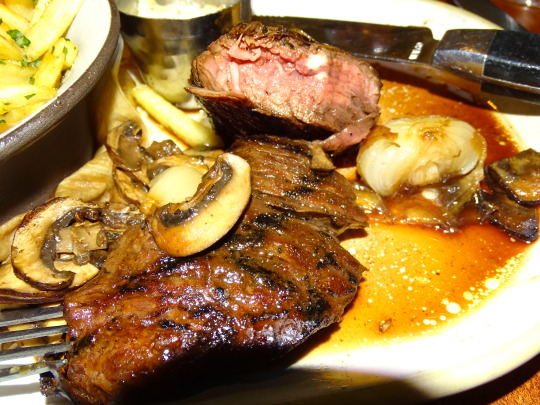

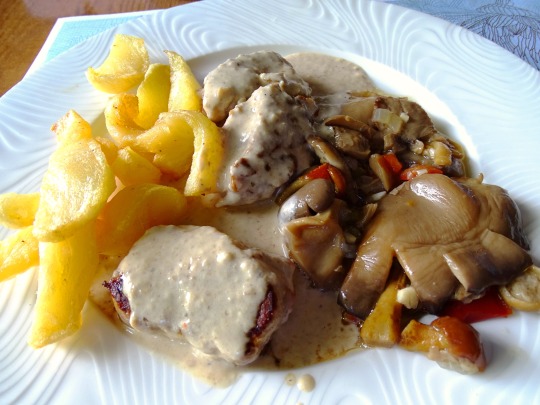
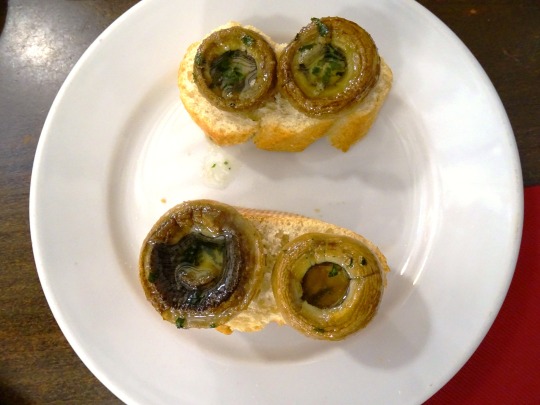


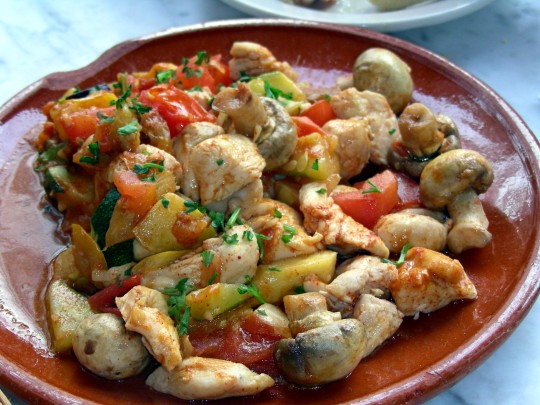

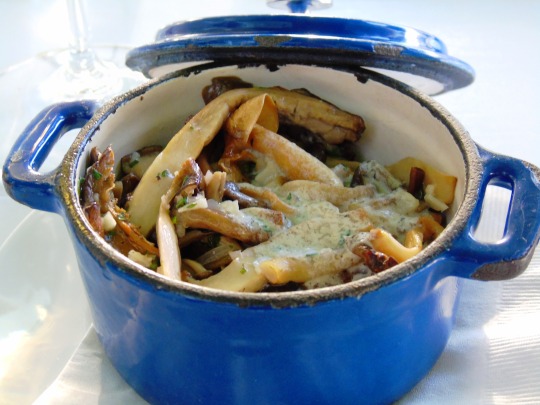
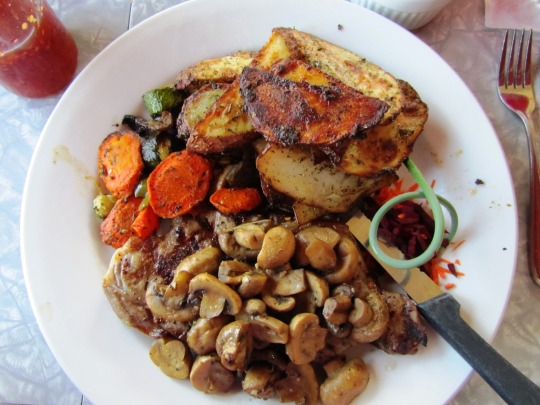
Day of the Mushroom
The Day of the Mushroom celebration is celebrated on April 16 and honors all things fungi. The fleshy, spore-bearing fruiting body of a fungus, which can grow anywhere above ground, on soil, or its food source, is known as a mushroom. The white button mushroom, which is grown, is the standard fungus to be called a mushroom. Therefore, fungi with a stem, cap, and gills on the underside of their cap are those to which the term “mushroom” is most frequently applied. The name “mushroom” is also relevant to describing the fleshy fruiting bodies of other Ascomycota because it is used to describe a range of different gilled fungi that may or may not have a stem.
History of Day of the Mushroom
Since they first appeared in early European communities, it is generally assumed that people have been gathering mushrooms since the beginning of time, possibly even in prehistoric times. Truffles and other types of mushrooms were prized in classical Greece and Rome. American author Cynthia Bertelsen claims in her book “Mushroom: A Global History” that both well-known historical authors, Pliny the Elder and Aristotle, wrote about fungus. She also claims that the Roman philosopher Galen wrote several paragraphs on the collection of wild mushrooms. Cynthia Bertelsen goes on to add that it is likely that China and Japan were the first places to cultivate mushrooms as early as 600 A.D.
But it took time for Americans to accept and become accustomed to mushrooms. In the cookbook “The Virginia Housewife,” mushrooms are mentioned for the first time in America (1824). Campbell’s Cream of Mushroom Soup, a classic American staple for casserole recipes, was created in the 1930s. Bertelsen adds that there may be archaeological proof of the spiritual usage of mushrooms as early as 10000 B.C. There is proof that various cultures, including the Ancient Greeks, the Mayans, the Chinese, and the Vikings, among many others, used hallucinogenic mushrooms.
Humans now consume edible mushrooms regularly, which has greatly boosted the agricultural and agro-economic development of the areas where they are grown. Around half of all farmed edible mushrooms are produced in China, which also accounts for six pounds of yearly mushroom consumption per person among the world’s 1.4 billion inhabitants. With an estimated 194,000 tonnes of yearly edible mushroom exports, Poland was the leading exporter of mushrooms in 2014.
Day of the Mushroom timeline
600 A.D. Earliest Known Cultivation of Mushrooms
Mushrooms are said to have been cultivated as far back in time as 600 A.D. in Japan and China.
1824 The Cookbook “The Virginia Housewife” is Published
The popular American cookbook “The Virginia Housewife” is released.
1966 Cynthia Berthelsen is Born
Berthelsen is born on June 1 and becomes an American author, food expert, and photographer.
2013 “Mushroom: A Global History” is Published
Berthelsen’s book “Mushroom: A Global History” is published.
Day of the Mushroom FAQs
What is Day of the Mushroom?
Day of the Mushroom, celebrated on April 16, is an American holiday created to celebrate the mushroom and its health and ecological benefits.
What are mushrooms?
Mushrooms are the fleshy, spore-bearing fruiting bodies of fungi, which are typically produced anywhere above ground, on soil, or the source of their food.
Are mushrooms edible?
Yes. Some mushrooms taste good and are safe for human consumption.
Day of the Mushroom Activities
Go mushroom hunting
Eat some mushrooms
Share the fun online
It's a good idea to go mushroom hunting on the Day of the Mushroom. Depending on a variety of variables, you can sometimes find mushrooms in your yard or the woods.
Consume some mushrooms! When used as culinary garnishing, several edible mushrooms are quite a delicacy and are also nutritious.
Don't forget to use the hashtag #DayOfTheMushroom to share your mushroom-related fun. Participate in the online discussion.
5 Interesting Facts About Mushrooms
They breathe like humans do
Fruiting bodies of mycelium
Mushrooms can be edible
China produces the most mushrooms
Mushroom spores can survive in space
Similar to how humans breathe, mushrooms take in oxygen and exhale carbon dioxide.
The fruiting body of the mycelium, not the mushroom, is the primary plant. .
Some mushrooms taste good and are safe for human consumption.
In terms of producing edible mushrooms, China leads the world, followed by Japan and then the United States.
Mushroom spores can survive the radiation and vacuum in space.
Why We Love Day of the Mushroom
Some mushrooms are edible
Edible mushrooms are tasty
Mushrooms can be healthy
Some, if not most, mushrooms are edible. That’s just one more source of food for us humans!
Edible mushrooms are actually tasty as well, and they definitely make a good vegan snack. Go pick some today!
Mushrooms are plants, and as such, their consumption is healthy. We love this!
Source
#steak with mushrooms#Bacon Wrapped Mushrooms#tapas#Spain#USA#Switzerland#Chicago Special Stuffed Pizza#Roasted Mushrooms#travel#Brix Restaurant & Gardens#Sweden#Verduras del labrador#food#restaurant#Day of the Mushroom#street food#original photography#tourist attraction#landmark#Canada#16 April#DayOfTheMushroom
4 notes
·
View notes
Text
Introducing The Silk Road
by Anshad M.

The Silk Route was a network of ancient commercial routes that connected Asia with the Mediterranean, passing through China, India, Persia, Arabia, Greece, and Italy. From the second century B.C. to the fourteenth century A.D., it accelerated the exchange of goods, ideas, languages, culture, art, and religious beliefs across various civilizations. It was given the name Silk Route due to the extensive silk trade that took place at that time and China held a monopoly on the production of this priceless fabric since the production technique was unknown to other countries.
Along with silk, the route aided in the trade of various fabrics, precious stones, grains, fruits, and vegetables, as well as hides from animals and other valuables like wood and metalwork. The economic conditions of the regions were also improved by export and import along the route.
Travellers used horse or camel caravans and lodged at guest homes or inns that were usually spaced by one day of travel. Ports along the Silk Route's maritime routes offered trade opportunities and fresh water for drinking. The most contemporary Silk Road travellers have been archaeologists and geographers who are studying ancient sites.
This trade network covered more than 4,000 miles of land and water routes. It mainly comprised two major routes, one connecting China to Central Asia and the other the West and Central Asia and the markets and trading posts along the Silk Road made it easier to exchange, transport, store, and distribute goods. It was the most active trade route in ancient times. In a short time, it evolved into a crucial component of the geopolitical and economic system that every state wanted to control.
History
The Silk Road was officially opened by Zhang Qian, a Chinese diplomat who served in the Han period. In 138 B.C., the Han emperor Wu asked him to oversee cultural exchange with Central Asia. It was one of the first attempts to encourage scholarly exchange between the East and Europe. But historical evidence indicates that the road was in use as a commercial route far earlier. Later, Qian expanded these routes in Central Asia through military conquests and travels.
During the Tang Dynasty, its land and sea routes were the finest for trade (618-907 A.D.). But due to shifts in the Chinese leadership, its boundaries were constantly changing. Starting in Xi'an, the route followed the Great Wall of China. It then passed across the Taklamakan Desert and the Pamir Mountains before passing via Afghanistan to the Levant. The rest of the Silk Road's trade was then carried through the Mediterranean Sea. For traders, the Levant was dangerous because of the distance, the growth of Arabian dominance, and the prevalence of bandits there. In the 13th century, the Mongols brought the route back to life and made it safer for traders.
Cultural Significance of the Silk Route
The network of trade routes paved the way for cross-regional trade. It also promoted the exchange of culture, language, religion, art, philosophy, science, and technology beyond national boundaries. For instance, Buddhism and Nestorian Christianity were introduced to China along the Silk Road.
Through this approach, other religions such as Hinduism, Christianity, and Islam were also transmitted between civilizations.Thus, it helped in establishing international long-distance economic and political relationships. Unfortunately, pandemics like the bubonic plague were also propagated through this commercial and cultural exchange network.
Travel on the Silk Road
Traders had to find proper means of transporting their goods. The camel was the preferred means of transportation for overland journeys. From the second millennium BCE forward, nomadic peoples in central Asia began domesticating camels. For instance, the Han Chinese transported war supplies on camels they had taken from the Xiongnu. Camels could carry up to 500 pounds at once and could survive the severe desert conditions in Central Asia. Pack animals, particularly camels, made it possible to move commodities over land on the Silk Road.
The ocean was also used for the transportation of goods by merchants and sailors. To properly navigate the waters, sailors required a solid knowledge of wind direction and storm systems. For instance, monsoon winds in the Indian Ocean originate from the southwest during the summer and the northeast during the winter. Merchants could sail from the Red Sea between Egypt and Arabia toward India in the summer and back to the Red Sea in the winter with the southwestern breeze that pushed them east. The sailors shared this information, and it spread beyond the Indian Ocean.
Four Pathways which connected India with Silk Roads
1. The route via the high Tibetan plateau leads to Sravasti beside the Ganges.
2. The Road leads to the Ganges' fertile valleys via the mountains and valleys of western Nepal.
3. The Silk Roads crossed the Western Himalayas via the Karakoram via Srinagar, Leh, and Sangju Pass.
4. The road down the Ganges – Delhi to Chandraketugarh in West Bengal.
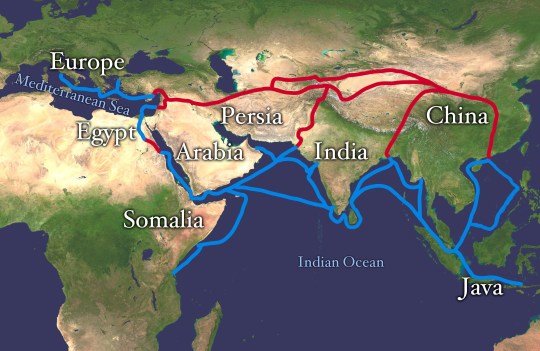
2 notes
·
View notes
Text
Reefer Container Temperature for Pomegranate
Pomegranates are well known around the world for their vibrant color, delicious sweetness and tanginess combination, and numerous health benefits. From India’s orchards to tables across the globe, pomegranate varieties like Alandi/Vadki, Dholka, Kandhari, Kabul, Muskat, Paper Shelled, and Spanish Ruby are exported to countries like Greece, Israel, Russia, the UAE, and Italy. As this exotic fruit is particularly susceptible to unfavorable storage conditions, setting the correct pomegranate temperature in reefer container is essential to preserving its quality from harvest to consumption.
Pomegranate temperature in reefer conatiner, if set correctly can maintain their quality during transportation. Whether you are a distributor or retailer, you need to understand the pomegranate temperature in reefer container to export the fruits overseas safely.

The Ideal Temperature in Reefer Containers for Pomegranate [H2]
Pomegranate temperature in a reefer container depends on the nature of the fruit being shipped.
The following are the essentials for pomegranate storage according to the specified temperature:
Optimal Temperature: From +4 to +6 °C (or +39 to +43 °F)
To maintain the quality and lengthen the shelf life of pomegranates, stick to this temperature range.
Maximum Air Exchange: 15 M³/hour
Ensure sufficient, regulated airflow to avoid carbon dioxide accumulation and preserve freshness.
Roughly Stored Time frame: 60 days
When stored properly, pomegranates can last up to 60 days before their quality starts to deteriorate.
Controlled Humidity: Off
Pomegranates do not require active humidity control when stored, in contrast to certain other fruits. Turn off humidity controls to avoid an excessive buildup of moisture, which can cause rot or mold.
. Value Protection Deadline: Ten days following the date of harvest
Ensuring that the items fulfill quality criteria upon arriving at the port of loading requires them to be gated in within 10 days of the harvest date.
Conclusion:
Pomegranate temperature in a reefer container can be a game changer for preserving the quality of the perishable goods being shipped to different countries. With the launch of refrigerated containers, export business has become easier to conduct, thereby reducing the cost of transportation.
Citrus Freight, one of the top-ranking reefer booking platforms, is the best choice to export perishable goods. The reefer containers at Citrus Freight can easily track the goods whereabouts.
Hurry up! Avail reefer containers at a competitive cost!
0 notes
Text
How to Start Fruit Export Business from India?

India's fruit sector is experiencing significant growth, presenting vast opportunities for exporters. From exotic kiwis to delectable mangoes, a world of flavors awaits discovery. India, with its diverse climate and long agricultural history, stands as a powerhouse in fruit production.
Why Export Fruits from India?
The high demand for premium fruits in countries like the US, Europe, Hong Kong, and Vietnam makes fruit export from India a lucrative business opportunity. Despite the challenges of navigating the fruit export industry, it remains a promising venture due to India's capacity to produce various fruits at competitive prices.
Fruit Export from India: Key Statistics and Facts
India is a major player in the global fruit export market. In the fiscal year 2022-2023, the country exported 674,291.70 MT of fresh fruits (excluding grapes and mangoes), generating revenue of Rs. 2,736.99 crores, equivalent to 339.00 USD million. Projections suggest that by 2024, India's fruit export industry will achieve a gross production value of USD 41.19 billion.
Top Fruits Exported from India
Mangoes:
India's mangoes, especially the Alphonso variety, are renowned worldwide for their rich, creamy texture and sweet, citrusy flavor. The demand for these mangoes is high in India and the Middle East, Europe, and the US.
Bananas:
As the world's largest producer of bananas, India's share in banana exports is steadily increasing. Besides fresh bananas, India also exports processed banana products like dried bananas, chips, and puree, catering to diverse culinary uses globally.
Pomegranates:
Known as the "jewels of winter," Indian pomegranates dominate over half of the world's production. Major export destinations include Greece, Israel, Russia, the UAE, and Italy.
Apples:
Indian apples, appreciated for their crispness and nutritional value, are exported primarily to Bangladesh, Nepal, and the Middle East. Varieties such as Green Apple, Pink Lady, Fuji, Gala, Honeycrisp, Envy, and Red Apple are well-known.
Oranges:
Indian oranges are versatile and in high demand for their use in food, perfumes, and cosmetics. Popular export varieties include Dancy, Nagpur Santra, Coorg Santra, Kinnow Mandarin, and Darjeeling Mandarin.
Leading Fruit Exporters in India
Prominent fruit exporters in India include:
Pisum Foods
Indian Farmers Export (IFE Fruits & Vegetables)
Radha Krishan Fruit Company
Jadli Foods India
Mahindra Agri
Balaji Foods Pvt Ltd
Dhanuka Agritech Ltd
Vardhan Exports Pvt Ltd
Golden Agri Exports Pvt Ltd
Vajreshwari Enterprises And Corp
Strategies for Successful Fruit Export from India
Establish an Export Firm:
Company Registration: Choose a suitable business structure (private limited, partnership, or sole proprietorship) and register with the Registrar of Companies (ROC).
Import Export Code (IEC): Obtain an IEC from the Directorate General of Foreign Trade (DGFT), certifying your business as an approved exporter.
Select Fruits for Export: Choose fruits with high export potential, considering factors like shelf life, export quantities, and market demand. Access real-time data from platforms like Eximpedia for insights.
Compliance and Documentation:
Registration and Licensing: Register with APEDA and secure necessary licenses.
Documentation: Ensure all export documents, including commercial invoices, origin certificates, and phytosanitary certifications, meet importing country specifications.
Access Reliable Export Data: Utilize platforms like Eximpedia to access market trends, competitor analysis, and potential buyer connections. This information is crucial for making informed export decisions.
Conclusion
India's fruit export industry is booming, driven by a diverse range of fruits and robust international trade relations. For new exporters, leveraging resources like Eximpedia can provide valuable insights and help establish a foothold in the global market. Whether you need updated fruit export data, a list of top fruit exporters, or information on fruit HS codes, Eximpedia offers comprehensive support to navigate the fruit export landscape. Connect with Eximpedia today for a free live demo and take the first step towards successful fruit exporting from India.
#fruit export from india#fruit exporters in india#fruit export companies in india#list of fruits exported from india#fruit exporters#fruit export data
0 notes
Text
Global Olive Oil Market Size, Share, Trend, Growth and Global Opportunity Analysis and Industry Forecast, 2023-2030.
Overview
The Global Olive Oil Market was valued at US$ 14.56 Bn in 2022, estimated to reach US$ 21.06 Bn by 2030, with a CAGR of 4.33% from 2023-2030.
Olive oil is a type of oil that is made from the fruit of the olive tree. It is typically produced in Mediterranean countries such as Spain, Italy, and Greece, although it is now widely produced and consumed around the world. Olive oil is valued for its unique flavor and health benefits, and it is commonly used in cooking, salad dressings, and as a dip for bread. It is also used in cosmetics and traditional medicine. Olive oil is available in a variety of types and grades, including extra-virgin, virgin, pure, and pomace. Extra-virgin olive oil is the highest quality and most expensive, while pomace olive oil is the lowest quality and least expensive.
Market Drivers
The global market for olive oil is being driven by increasing awareness among consumers about the health benefits associated with the consumption of olive oil. There is a growing trend towards healthy eating and cooking, which has increased the demand for natural and organic ingredients such as olive oil. The increasing popularity of Mediterranean cuisine around the world, as well as, the increasing disposable income in emerging economies has led to a rise in demand for premium olive oil products, which has further boosted the growth of the global olive oil market.
Market Restraints
A primary challenge to the growth of the olive oil market is the susceptibility of olive trees to weather conditions and diseases, which can have a significant impact on production levels and quality. Additionally, the olive oil market is highly competitive, with many players competing for market share. The high price of olive oil compared to other types of vegetable oils also limits demand, particularly in price-sensitive markets.
Moreover, the presence of counterfeit products and the increasing popularity of alternative oils such as avocado oil and coconut oil could also impact the growth of the olive oil market.
Request A Free Sample : https://qualiketresearch.com/request-sample/Olive-Oil-Market/request-sample
Market Segmentation
The scope of the global olive oil market covers segmentation based on type, packaging, application, distribution channel, and region.
Based on type, the market is segmented into extra virgin olive oil, virgin olive oil, refined olive oil, blended olive oil, and others. Based on packaging, the market is segmented into bottles, cans, drums, and pouches. Further, the market is segmented into end-use, such as retail/households, food & beverage, pharmaceuticals & dietary supplements, cosmetics, and others. By distribution channel, the olive oil market is segmented into supermarkets/hypermarkets, convenience stores, online retailers, and others.
Regional Analysis
The global olive oil market is segmented into 5 main regions, namely, North America, Latin America, Europe, Asia Pacific, and Middle East & Africa. The European region, especially, Spain, Italy, and Greece are the major producers and exporters of olive oil, with Spain being the largest producer and exporter in the world. Europe dominates the market due to its favorable climate, abundant land, and advanced processing technologies. In recent years, the Asia Pacific region has emerged as a fast-growing market for olive oil due to increasing awareness about the health benefits of olive oil, growing urbanization, and changing food preferences. Moreover, the growing popularity of Mediterranean cuisine, rising disposable income, and increasing health consciousness among consumers are expected to drive the demand for olive oil in the Asia Pacific region.
Key Players
California Olive Ranch
Borges International Group
Del Monte Foods Inc
Gallo Worldwide LLC
Sovena Group
Salov S.p.A.
Deoleo
Avenida Rafael Ybarra
Sun Grove Foods Inc
Domenico Manca S.p.A., etc.
Read More @ https://qualiketresearch.com/reports-details/Olive-Oil-Market
About Us:
QualiKet Research is a leading Market Research and Competitive Intelligence partner helping leaders across the world to develop robust strategy and stay ahead for evolution by providing actionable insights about ever changing market scenario, competition and customers.
QualiKet Research is dedicated to enhancing the ability of faster decision making by providing timely and scalable intelligence.
QualiKet Research strive hard to simplify strategic decisions enabling you to make right choice. We use different intelligence tools to come up with evidence that showcases the threats and opportunities which helps our clients outperform their competition. Our experts provide deep insights which is not available publicly that enables you to take bold steps.
Contact Us:
6060 N Central Expy #500 TX 75204, U.S.A
+1 214 660 5449
1201, City Avenue, Shankar Kalat Nagar,
Wakad, Pune 411057, Maharashtra, India
+91 9284752585
Sharjah Media City , Al Messaned, Sharjah, UAE.
+971 56 846 4312
0 notes
Text
Top 5 Olive Oil Companies in the World
Originally Published on: SpendEdge |Top 5 Olive Oil Manufacturers Around the World
Olive oil, a liquid fat derived from olives, is widely used in cooking and has gained popularity due to its health benefits and culinary versatility. The cultivation of olive trees has ancient origins, dating back to the 8th millennium BC in the Mediterranean basin. The global olive oil market is subject to strict regulations, primarily overseen by the International Olive Council (IOC), which governs approximately 90%–95% of global production. Commercially, olive oil is categorized based on its acidity, measured by the weight of free oleic acid in a specific quantity. Various types of olive oil are available in the market, including virgin olive oil, extra virgin olive oil, refined olive oil, and olive pomace oil. SpendEdge's procurement market intelligence report on the global olive oil market emphasizes the increasing trend of adopting healthier dietary habits in both developed and emerging economies, which serves as a significant driver for market growth. Additionally, the report profiles the top global olive oil manufacturers.
Are you prepared for Smart Procurement?
If you are, SpendEdge is the ideal partner for you. Our procurement market intelligence solutions have assisted sourcing teams in managing multiple spending areas and achieving savings exceeding $2 billion.
Top 5 Global Olive Oil Manufacturers
Deoleo
Deoleo is a Spanish multinational corporation that holds a prominent position in global bottled olive oil sales. The company distributes its products to over 60 countries and maintains a diverse product portfolio featuring 40 brands, including Carbonell, Carapelli, Bertolli, and Sasso. Deoleo also owns leading brands in the seed oil market in Italy and Spain, along with a substantial presence in the dressings, vinegar, and table olives segments. Among its brands, Carbonell is the leading olive oil brand in Spain and records the highest sales figures among all Spanish olive oil brands.
Sovena
Sovena is a notable agri-processor that operates across the entire olive oil value chain, covering production through distribution. In addition to olive oil, Sovena manufactures olives, soaps, and cooking oils, categorizing its business divisions into consumer goods, oilseeds, agriculture, and biodiesel. This olive oil manufacturer markets its oil products under various brand names, including Oliviera Da Serra, Andorinha, Fula, Olivari, Gem, Tri-Fri, Clarim, Vege, and Fontoliva. In 2016, Sovena's Oliveira Da Serra brand developed a marketing and distribution strategy to expand its presence in China and Russia, further strengthening its global market footprint.
Borges
Borges Mediterranean Group is a global food processing enterprise known for its expertise in industrial processing, packaging, and marketing of seeds, olive oil, dried fruits, and vinegar. The company maintains an extensive network of distribution and transportation agents, exporting its products to over 120 countries and generating revenues exceeding $820 million. Apart from olive oil, Borges offers a wide range of products, including pastas, sauces, olives, vinegars, vinaigrettes, nuts, and balsamic condiments.
Minerva
Minerva is one of Greece's largest food companies and olive oil manufacturers, specializing in olive oil production and cheese manufacturing. The company exports its products to 42 major countries. Minerva engages in the manufacturing and distribution of products such as virgin olive oil, extra virgin olive oil, organic extra virgin olive oil, balsamic vinegars, and gourmet cheeses. In 2014, Minerva was awarded the Food Safety & Quality Management System Certification for its facilities located in Schimatari and Piraeus, Greece.
Gallo
Gallo is a leading Portuguese-based olive oil business with extensive experience in collaborating with olive tree growers, mill owners, research experts, and quality control professionals. Boasting over 90 years of expertise in olive oil production, the company adheres to stringent quality standards and collaborates closely with olive tree growers, experts, mills, and researchers to continually enhance its product offerings. Gallo has received numerous accolades for its excellence in olive oil manufacturing, including awards from the Concurso Internacional de Aceites de Olivia Virgen, Copenhagen International Olive Oil Awards, iTQi Superior Taste Award, and Los Angeles International Extra Virgin Olive Oil, among others.
Contact us for expert procurement solutions in the financial services sector.
0 notes
Text
A Journey of Greek Thyme Honey | Geohoney

Honey has been a part of the human diet and culture for thousands of years. It has been used as a natural sweetener, as a medicine, and as a symbol of fertility and abundance in many ancient civilizations. Today, honey is still appreciated for its unique taste and health benefits, and is widely used in culinary and cosmetic applications.
One type of honey that is particularly renowned for its flavor and properties is Greek Thyme Honey, also known as Thyme Honey. This honey is produced by honey bees that forage on thyme flowers, which grow abundantly in the Greek countryside. This Honey is highly prized for its distinctive taste, aroma, and nutritional value, and is considered a delicacy by many honey enthusiasts.
The journey of Thyme Honey from hive to table is a fascinating process that involves the hard work of honey bees, the knowledge and skill of beekeepers, and the quality control and distribution efforts of honey producers. Let's take a closer look at each step of this journey and discover the unique features and Benefits of Thyme Honey.
Step 1: Beekeeping
The first step in this journey is beekeeping. Beekeepers in Greece have been practicing this art for centuries, using traditional methods and tools to manage their hives and harvest honey.
Step 2: Honey Production
The second step is honey production. This involves the collection of nectar by honey bees and its transformation into honey through a process of enzymatic digestion, regurgitation, and evaporation.
Step 3: Quality Control
The third step of the journey is quality control. Honey producers in our Bee farm are renowned for their strict quality standards and rigorous testing procedures, as we follow a patented monofloral honey technology, which ensures that only the highest-quality honey makes it to the market.
Step 4: Distribution
The final step is distribution. Thyme Honey is exported to many countries around the world, where it is valued for its taste and health benefits. It is commonly used in cooking, baking, and as a natural sweetener, and is also recommended for its antibacterial and anti-inflammatory properties.
Benefits of Thyme Honey
It is one of the healthiest types of honey, due to its unique blend of antioxidants, vitamins, and minerals.
It Boosts Immune System
It Aids Digestion
It Soothes Sore Throat
It Promotes Skin Health
Uses of Greek Thyme Honey
It has a versatile ingredient that can be used in many culinary and cosmetic applications. Here are some of the most common uses of Greek Thyme Honey: -
As a Natural Sweetener
In Baking
As a Marinades and Glazes
As a Beauty Product
How to Consume Thyme Honey?
It can be consumed in many ways, depending on personal preferences and health goals. Here are some tips for Consuming Thyme Honey: -
Raw: The best way to consume it is raw, as heating or processing can reduce its nutritional value and flavor. It can be drizzled over yogurt, oatmeal, or toast for a healthy and delicious breakfast.
Infusions: It can be infused with herbs, spices, or citrus fruits to add variety and complexity to its flavor. It can be used in tea, cocktails, or as a salad dressing.
Medicinal: It can be taken as a natural remedy for sore throat, cough, and other respiratory ailments. It can be mixed with lemon juice and warm water to create a soothing and healing drink.
Conclusion
Greek Thyme Honey is a unique and valuable product that represents the best of Greek beekeeping and honey production. By understanding A Journey of Thyme Honey from Hive to Table, we can appreciate the hard work and dedication that goes into producing this natural treasure. Whether consumed raw, infused, or medicinally, this honey is a delicious and healthy addition to any diet.
Go to Geohoney and Buy Now!
#Greek Thyme Honey#Benefits of Thyme Honey#Thyme Honey#Natural Honey#Pure Honey#World Best Honey#Honey
0 notes
Link
#greece exports#greece fruit exports#greece vegetable exports#greece food exports#fruit exports greece#fruit exports to europe
1 note
·
View note
Link
#Greek Fruit Exports#greek fruits export#greek vegetable exports#fruit exports Europe#order fruits from Greece#greek food exports#watermelon exports#fruit exports Greece#greek fruits#export company Greece#fruit exporters#fruit wholesalers#greek exports
2 notes
·
View notes
Link

The coronavirus pandemic and the unprecedented havoc it has caused across the entire world has dealt an enormous and unprecedented blow to nations’ economies.
However, one agricultural sector seems not only to be emerging from the crisis without a scratch — its business is now profiting from a shift in consumers’ buying choices as well.
According to a statement issued recently by Incofruit – Hellas, the Hellenic Association of Fruit, Vegetable and Juice Exporters and Processing Companies, the exports of fresh fruit and vegetables in Greece are enjoying a high sales trajectory at the moment.
Greece’s producers of kiwi fruit in particular are expected to see a record-breaking year regarding the quantity of their exports.
Additionally, agricultural firms that produce oranges, as well as apples, lemons, cucumbers, strawberries, mandarin oranges and other vegetables and fruits, are seeing a hike in the numbers of tons their businesses export.
In another positive development for the agricultural sector, domestic consumption of these same fruits and vegetables in Greece has grown as well.
10 notes
·
View notes
Text
Basil 101 - Ocimum selloi Benth.

Name: Basil
Scientific name: Ocimum selloi Benth.
Disclaimer: Due my native language is not english, some scientific expressions can be wrong. I'm also using local resource.
History:
· Due to the shape of its leaves, (heart), it was considered a symbol of love, in Italy, and of mourning, in Greece. (Portal São Francisco, 2016)
· 4,000 years ago, the Hindus, who were percussionists in the culture of basil, exported to Egypt. (Portal São Francisco, 2016)
· In the last century, basil was used by shoemakers to attenuate the smell of leather. (Portal São Francisco, 2016)
· The name “basilicum” has its origin in the Greek “basilikós”, which means “of the kings, or royal”, to indicate its nobility. The Greek botanist of Theofrasto, in the 3rd century BC, defined basil as an herb of kings. (History of Ingredients, 2016).
Description: ·
Plant characteristics: Herbaceous plant grown in gardens and widely known throughout Brazil. It is characterized by the pleasant smell that is released from its leaves. It has a quadrangular stem and the leaves are opposite, sharp and in large numbers. White, small flowers, arranged on an elongated axis, always branching into 3 parts. Secondary inflorescences are formed on each axis, which are congested at the top of triflor. Bilabiated corolla with 4 pieces having 4 didamous stamens. Nucular fruit with 4 dark nuclei. It is a meliferous plant. It is multiplied by seeds or tips detached from the branches of branches in fertile soils rich in organic matter, permeable and with high temperatures. (Treatise on Medicinal Plants, 2014) ·
Propagation: it is made by seeds or cuttings of branches. Basil seeds are sown in 200-cell expanded polystyrene trays containing commercial substrate, kept in protected cultivation. At 30 days after sowing, the seedlings have four definitive leaves and are suitable for transplanting (PEREIRA; MOREIRA, 2011).
Cultivation: Seedlings can be planted in pots or in nurseries throughout the year. For this, the beds must be well prepared, raising them 15 cm high. Use 150 g of well-tanned bovine manure for each square meter of bed and mix well. Sow and cover with 0.5 cm of light soil or fine sawdust. The recommended spacing is 30 cm between lines and 30 cm between plants. Irrigate at least once a day, preferably in the early morning or late afternoon. After 60 days of planting in the beds, the first harvest can be made, with the plant being cut at 20 cm from the soil (PEREIRA; MOREIRA, 2011).
How to choose and where to find:
· Fresh: Fresh bunches and pots of basil are found in fairs, markets and supermarkets. Choose the branches with the most lush leaves and that are not stained or wilted.
· Dry: Found in supermarkets and emporiums. Prefer what is in dark packaging, protected from light. This prevents loss of aroma. Check the expiration date.
How to Store
· Fresh
1- the basil spoils quickly, but it can be packed in plastic packaging and dried, for up to three days at the most.
2- chop the leaves and place them in a closed glass, with oil.
· Dry: In a closed pool of light and humidity.
How to dry: ·
Buy two large bundles of basil, wash them well and spread them on a clean cloth until dry. Then, highlight the leaves and, in a glass bowl, make layers of leaves, alternating with thin layers of coarse salt. Cover the glass bowl with glass film and leave at room temperature. Stir once a day for the first three days. It can be used for two months. The leaves become dry and the salt acquires the aroma of basil. You can use only the leaves or also the coarse salt.
Chemical Constitution:
· Tannins: Tannins are astringent and hemostatic and, therefore, their therapeutic applications are related to these properties. They are mainly used in the tanning industry and are also used in the paint industry. They are used in laboratories to detect proteins and alkaloids and used as antidotes in cases of poisoning by alkaloid plants.
· Flavonoids: Therapeutically its function is not yet clearly clarified. The group is known for its anti-inflammatory, anti-allergic and vasoprotective effects (treatment of thrombosis). Rutin and hesperidin are important flavonoids used in capillary fragility treatments.
· Saponins: Saponoside glycosides have this name due to the fact that they form abundant foam when agitated with water (from Latin frog = soap). They taste bitter and acrid and the drugs that contain them are usually sternutatory (cause sneezing) and irritating to the mucous membranes. They are non-nitrogen compounds that dissolve in water giving afrogen solutions (foaming), by decreasing the surface tension of the liquid. They also have the properties of emulsifying oils and producing hemolysis. The latter is due to the ability of the glycoside to combine with the cholesterol molecules present in the erythrocyte membrane, disturbing the internal-external balance and promoting the rupture of the cell with the consequent release of hemoglobin.
· Essential oil:
o Thymol - has carminative, anti-spasmodic, expectorant and anti-inflammatory properties. Significant antiseptic potential.
o Methyl-chavicol - antimicrobial, anti-inflammatory, local anesthetic and insecticide activities
o Linalool - used for its woody, floral and refreshing aroma. o Eugenol - anesthetic, bactericidal and antifungal and flavoring properties (hot and spicy note)
o Cineol - decongestant and anti-inflammatory property, eucalyptus aroma the
o Pyrene
Herbal Actions:
Digestant: An herb that promotes good digestion.
Carminative: Herbs or essential oils that help the intestines release gas. They work by relaxing the gut spasms and increasing the peristalsis so that it pushes the gas out.
Sweetener: It has the ability to sweeten.
Aperientes: Aperientes herbs are mild laxatives.
Indications:
Basil favors those who have difficult digestion, gas, heartburn, headaches as a result of heavy or inadequate food. It facilitates the functioning of the intestines, it is a diuretic. It is good for coughs, vomiting, bad breath. It helps, along with Malva and sage in mouth infections.
Magical uses (under observation of effectiveness):
Basil's scalding is great for those who are aggressive, angry and ready to explode. Take the rage away. Basil tea helps very restrained people to release love. It can also be placed in pots to prevent the entry of negative energies. Basil compresses (a paste piled with leaves) helps mothers who have painful or cracked breasts after breastfeeding. Gargling with is great for sore throat, thrush or bad breath. It transmutes our aggressive energy, transforming it into will and strength to fight for more important things like goals and ideals. It helps to fight for life and for the things we want. It is great for the disorganized and undisciplined. Help us to see the brightness and the scent of life.
Dosage: There is little information on the safe or effective dosage of basil. Usually 10 to 20 ml of fresh basil leaf juice is used once a day or teas with an infusion of 2 grams of fresh basil or dried herb in boiling water twice a day.
Sources:
Basil relieves intestinal problems and has anti-inflammatory action (HERE)
Brazilian Society of Pharmacognosy (HERE)
Portal São Francisco (HERE)
History of Ingredients (HERE)
Treatise on Medicinal Plants (Download the book: HERE)
#green witch#witchblr#pagan witch#witchcraft#basil#materia magica#madamsaturn#mine#herbal#holisitichealth#plantas#plants#medicinal plants#101
12 notes
·
View notes
Text
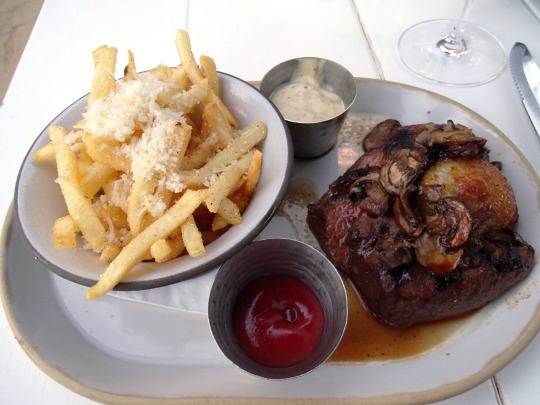








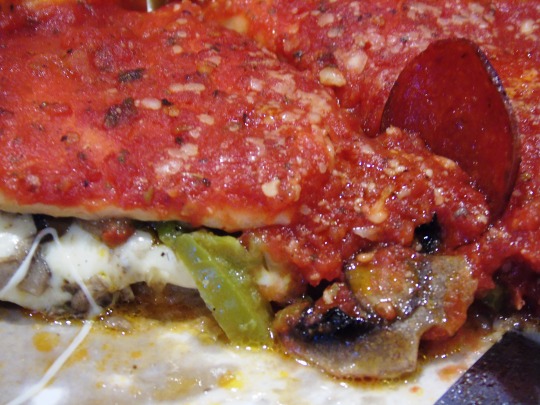


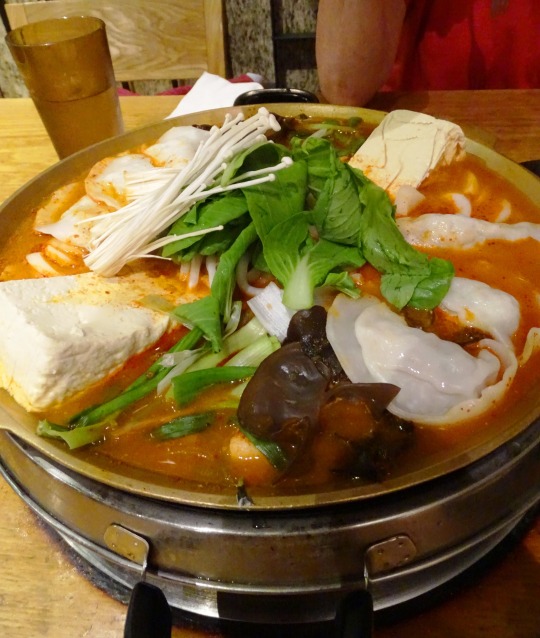



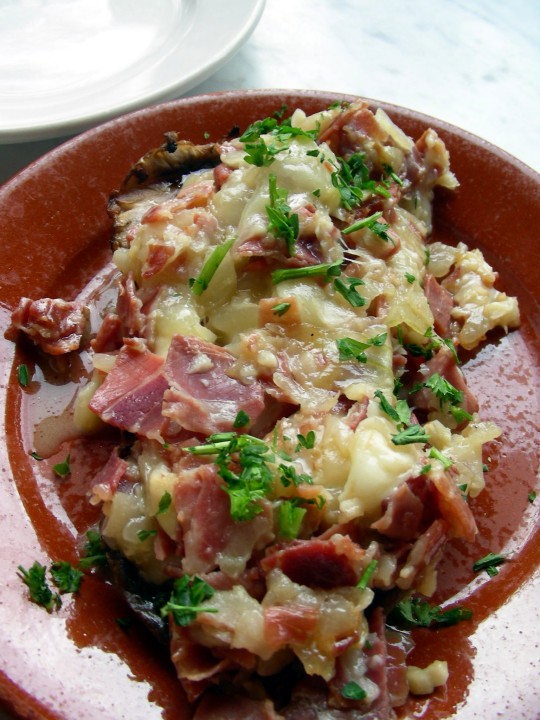
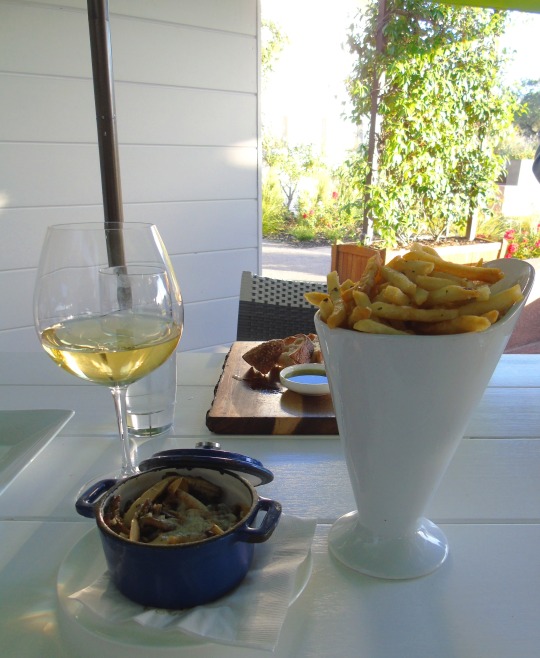






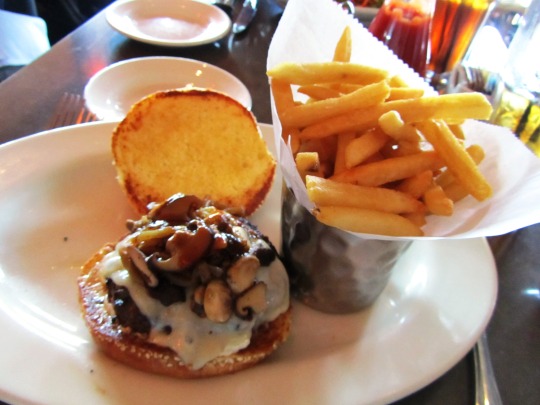
Day of the Mushroom
The Day of the Mushroom celebration is celebrated on April 16 and honors all things fungi. The fleshy, spore-bearing fruiting body of a fungus, which can grow anywhere above ground, on soil, or its food source, is known as a mushroom. The white button mushroom, which is grown, is the standard fungus to be called a mushroom. Therefore, fungi with a stem, cap, and gills on the underside of their cap are those to which the term “mushroom” is most frequently applied. The name “mushroom” is also relevant to describing the fleshy fruiting bodies of other Ascomycota because it is used to describe a range of different gilled fungi that may or may not have a stem.
History of Day of the Mushroom
Since they first appeared in early European communities, it is generally assumed that people have been gathering mushrooms since the beginning of time, possibly even in prehistoric times. Truffles and other types of mushrooms were prized in classical Greece and Rome. American author Cynthia Bertelsen claims in her book “Mushroom: A Global History” that both well-known historical authors, Pliny the Elder and Aristotle, wrote about fungus. She also claims that the Roman philosopher Galen wrote several paragraphs on the collection of wild mushrooms. Cynthia Bertelsen goes on to add that it is likely that China and Japan were the first places to cultivate mushrooms as early as 600 A.D.
But it took time for Americans to accept and become accustomed to mushrooms. In the cookbook “The Virginia Housewife,” mushrooms are mentioned for the first time in America (1824). Campbell’s Cream of Mushroom Soup, a classic American staple for casserole recipes, was created in the 1930s. Bertelsen adds that there may be archaeological proof of the spiritual usage of mushrooms as early as 10000 B.C. There is proof that various cultures, including the Ancient Greeks, the Mayans, the Chinese, and the Vikings, among many others, used hallucinogenic mushrooms.
Humans now consume edible mushrooms regularly, which has greatly boosted the agricultural and agro-economic development of the areas where they are grown. Around half of all farmed edible mushrooms are produced in China, which also accounts for six pounds of yearly mushroom consumption per person among the world’s 1.4 billion inhabitants. With an estimated 194,000 tonnes of yearly edible mushroom exports, Poland was the leading exporter of mushrooms in 2014.
Day of the Mushroom timeline
600 A.D.
Earliest Known Cultivation of Mushrooms
Mushrooms are said to have been cultivated as far back in time as 600 A.D. in Japan and China.
1824
The Cookbook “The Virginia Housewife” is Published
The popular American cookbook “The Virginia Housewife” is released.
1966
Cynthia Berthelsen is Born
Berthelsen is born on June 1 and becomes an American author, food expert, and photographer.
2013
“Mushroom: A Global History” is Published
Berthelsen’s book “Mushroom: A Global History” is published.
Day of the Mushroom FAQs
What is Day of the Mushroom?
Day of the Mushroom, celebrated on April 16, is an American holiday created to celebrate the mushroom and its health and ecological benefits.
What are mushrooms?
Mushrooms are the fleshy, spore-bearing fruiting bodies of fungi, which are typically produced anywhere above ground, on soil, or the source of their food.
Are mushrooms edible?
Yes. Some mushrooms taste good and are safe for human consumption.
Day of the Mushroom Activities
Go mushroom hunting: It's a good idea to go mushroom hunting on the Day of the Mushroom. Depending on a variety of variables, you can sometimes find mushrooms in your yard or the woods.
Eat some mushrooms: Consume some mushrooms! When used as culinary garnishing, several edible mushrooms are quite a delicacy and are also nutritious.
Share the fun online: Don't forget to use the hashtag #DayOfTheMushroom to share your mushroom-related fun. Participate in the online discussion.
5 Interesting Facts About Mushrooms
They breathe like humans do: Similar to how humans breathe, mushrooms take in oxygen and exhale carbon dioxide.
Fruiting bodies of mycelium: The fruiting body of the mycelium, not the mushroom, is the primary part.
Mushrooms can be edible: Some mushrooms taste good and are safe for human consumption.
China produces the most mushrooms: In terms of producing edible mushrooms, China leads the world, followed by Japan and then the United States.
Mushroom spores can survive in space: Mushroom spores can survive the radiation and vacuum in space.
Why We Love Day of the Mushroom
Some mushrooms are edible: Some, if not most, mushrooms are edible. That’s just one more source of food for us humans!
Edible mushrooms are tasty: Edible mushrooms are actually tasty as well, and they definitely make a good vegan snack. Go pick some today!
Mushrooms can be healthy: Mushrooms are fungi, and as such, their consumption is healthy. We love this!
Source
#steak with mushrooms#Bacon Wrapped Mushrooms#tapas#Spain#USA#Switzerland#Chicago Special Stuffed Pizza#Roasted Mushrooms#travel#Brix Restaurant & Gardens#Sweden#Verduras del labrador#food#restaurant#Day of the Mushroom#street food#original photography#tourist attraction#landmark#Canada#16 April#DayOfTheMushroom#Mushroom Soup#Champños Serranos#Kimchi Mandu Jeongol Hot Pot#Truffled Parmesan Chicken#Bacon Mushroom Mikeburger#Hot Mushroom Sandwich#LUGA
1 note
·
View note
Text
Echoes of the Past Day 1: Hometown
@arcana-echoes

(Image from Google, technically. I don’t know who the original photographer is)
Morgan grew up in a coastal town in the Republic of Galbrada, a relatively small island to the southwest of Prakra. The people in her town were generally friendly, and as a child, Morgan got along with most of them. Her town was safe enough that even when she was little, she would frequently (with her mother’s permission) wander around her neighborhood, or else down to the docks to watch sailors come and go. Her charm and sunny disposition made her dear to her community.
Her town was primarily a fishing town. Even so, she found the simple life of a fisherman unsatisfying and mundane. She much preferred the exciting lives of the merchants who left Galbradan waters, and would spend hours at the docks listening to their tall tales. Listening to these stories fed her thirst for adventure, and at a young age, she decided that becoming a sailor was the best way to chase that dream.
Generally speaking, Morgan did love her hometown. While not the most lively or exciting, it was inviting and familiar. Though she wanted to sail the world over, she also wanted to keep her hometown as her home base, so to speak; a place she knew she could always return to and be welcome.
More info about Galbrada under the cut! Like, lots more. Not for the faint of heart.
Since there’s no known information about Galbrada aside from its name, location, and type of government, I decided to make something up. In my headcanon version of the world, Galbrada is the bastard child of ancient Greece and ancient Egypt, with a possible sprinkling of Middle Eastern influence. Morgan’s hometown, specifically, is based on a Grecian town called Oia, but places such as Galbrada’s capital would appear more Egyptian in style.
Agriculture and Economy
Despite not being ideal farm lands, the extensive irrigation systems that crisscross the island make farming much more common. Pieces of arable land sell for high prices, as it is in relatively short supply. Towards the edges of the island, fishing is the most common occupation, with the Emerald Sea providing a wealth of fish to catch and sell. Galbrada’s main exports are beer and exotic fruits like melons and figs. Within the island, bartering is slightly more prevalent than the exchange of money.
Lifestyle and Culture
Most people live comfortably as farmers or fishers. The profession of farmer is highly respected, as farming the unforgiving land in Galbrada is no easy feat.
Families are important in Galbradan culture, and the concept of family extends far past the nuclear family model. The phrase “it takes a village to raise a child” is very prevalent. Communities are relatively tightly-knit, so when one family is struggling, others will pitch in to support them until they can be self-sufficient again. Communities and families are more often matriarchal in structure.
The enjoyment of life plays a large role in Galbrada; festivals, sports, and games are as much a part of Galbradan life as farming and fishing. Their culture heavily subscribes to the idea of living life to its fullest, working hard and playing hard.
Galbradan children are often exempt from most labors until the age of 5, after which they are either put in school or begin to learn their family’s trade. Many children begin apprenticeships with family or community members at age 16. Children are considered adults at age 19. Even among the upper class, arranged betrothals are rare, and teenagers are encouraged to pursue whatever romantic relations they wish.
Social Structure
The upper class is made up of politicians or government officials, physicians, and artists. Below these professions are artisans, farmers, and merchants. The lowest class consists of fishers and laborers.
Government
Galbrada’s government is a republic, and therefore has no fixed ruler or succession. The leader is called the Praetor, and is elected by the voice of the people every five years. The minimum age for a Praetor is 40, and the Praetor can only be a man (not because men lead better, but because women are the primary governors of the household and thus have a more important job to do).
Criminals are brought before the local citylord. Trials by jury are common practice, and all adults are required to cast their vote, assuming they have no other major commitments.
Holidays
A few major Galbradan holidays are the winter solstice, summer solstice, beginning of spring, and end-of-summer harvest. Holidays are usually celebrated with large gatherings, feasts, and music.
7 notes
·
View notes
Text
Start Fruit Export Business from India

India's fruit sector is experiencing significant growth, presenting enormous opportunities for exporters. From exotic kiwis to delectable mangoes, a world of flavor awaits discovery. India's diverse environment and long history of agriculture make it a catalyst in fruit production. With high demand for premium fruits in countries like the US, Europe, Hong Kong, Vietnam, and others, exporting fruits from India can be a lucrative business venture. However, navigating the fruit export industry requires a thorough understanding and strategic planning.
This comprehensive guide will outline 10 essential steps to start fruit export from India, provide up-to-date industry insights, share fruit export data, highlight top Indian fruit exporters, and analyze the top 10 fruit exporting nations.
Is the Fruit Export Business Profitable?
India, the world's second-largest producer of fruits and vegetables after China, offers a wide range of premium exotic and sweet fruits, making fruit exports a profitable commercial venture. India produces an impressive variety of fruits, including mangoes, bananas, papayas, oranges, apricots, grapes, strawberries, apples, guavas, and litchis. Additionally, India's lower production costs compared to other countries make it a successful investment for exporters.
Fruit Export from India: Key Stats & Facts
India's fruit export industry is thriving. In the fiscal year 2022-2023, the country exported 674,291.70 metric tons (MT) of fresh fruits, excluding grapes and mangoes, worth Rs. 2,736.99 crores, or approximately 339.00 million USD. Projections indicate that by 2024, the gross production value of fruit exports from India will reach USD 41.19 billion. India produces a wide range of fruits, such as bananas, pomegranates, grapes, and mangoes, making it one of the world's largest fruit exporters.
Which Fruits Does India Export the Most?
Mangoes
India produces a wide variety of mangoes, each with a unique flavor, aroma, and texture. The Alphonso mango, known as "Hapus," is particularly prized for its rich, creamy texture and sweet flavor with hints of citrus. Mangoes are in great demand not only in India but also in the Middle East, Europe, and the US.
Bananas
Despite being the world's largest producer of bananas, India's export share is still growing. India also exports processed banana products like dried bananas, chips, and puree, which are used in various cuisines worldwide.
Pomegranates
Known as the "jewels of winter," pomegranates are one of the most widely exported fruits from India. The main export markets for this fruit include Greece, Israel, Russia, the United Arab Emirates, and Italy.
Apples
Indian apples, known for their crisp and nutritional qualities, are exported to Bangladesh, Nepal, and the Middle East, though they are mostly consumed domestically. Varieties include Green Apple, Pink Lady Apple, Fuji Apple, Gala Apple, Honeycrisp Apple, Envy Apple, and Red Apple.
Oranges
Oranges are in high demand worldwide due to their versatility. Popular Indian orange cultivars include Dancy, Nagpur Santra, Coorg Santra, Kinnow Mandarin, and Darjeeling Mandarin. Oranges are used in perfumes, cosmetics, and as a flavoring and component in food.
Major Fruit Exporters in India
India has numerous well-known fruit exporters, including:
Pisum Foods
Indian Farmers Export (IFE Fruits & Vegetables)
Radha Krishan Fruit Company
Jadli Foods India
Mahindra Agri
Balaji Foods Pvt Ltd
Dhanuka Agritech Ltd
Vardhan Exports Pvt Ltd
Golden Agri Exports Pvt Ltd
Vajreshwari Enterprises And Corp
These companies are leading the way in exporting bananas, oranges, pomegranates, mangoes, and grapes. The Indian government's active support for this industry has solidified India's position as a significant player in the global fruit market.
Key Strategies to Export Fruit from India
1. Establish an Export Firm
Before diving into the specifics of fruit export from India, establishing a proper export company is crucial. This involves:
Company Registration: Choose between a private limited corporation, partnership, or sole proprietorship.
Registrar of Companies (ROC): Register your firm.
Import Export Code (IEC): Obtain an IEC from the Directorate General of Foreign Trade (DGFT), which certifies your business as an approved exporter.
2. Select the Fruits for Export
Choosing the right product for export is the most critical step in starting a fruit import-export business. Consider factors like export quantities, values, and updated fruit export data. Utilize data-driven platforms to gain real-time insights on fruit export data, a list of fruits for export from India, fruit HS codes, and top fruit export companies in India. Opt for fruits with a longer shelf life, as exporting to other nations may take time.
3. Compliance and Documentation
Ensure compliance with all necessary registrations and licenses, such as APEDA (Agricultural and Processed Food Products Export Development Authority) and the Import Export Code (IEC). Accurate and complete documentation is essential, including commercial invoices, origin certificates, and phytosanitary certifications.
4. Obtain a Reliable Fruit Exporter List
Accessing trustworthy fruit export data is essential for making informed decisions. Eximpedia offers valuable insights for navigating the global fruit trade. Benefits include:
Market Trends: Analyze real-time fruit export data to identify trends in fruit prices, demand, and popular locations.
Competitor Analysis: Understand competitors' export operations, including the types of fruits they ship, target markets, and shipment volumes.
Finding Potential Buyers: Connect with potential fruit buyers in target markets and find reputable or updated fruit exporters in India.
Final Words
India's fruit export industry is booming, with fruits like pineapples, dragon fruits, strawberries, guavas, litchis, papayas, sapotas (chikoo), jackfruits, pears, ber, amla, and coconuts in high demand worldwide. The fruits discussed in this article are some of the most popular exported from India. With a wide range of fruit options and stronger international trade ties, India's fruit export industry continues to flourish.
Suppose you are a new exporter looking to get started. In that case, Eximpedia can help you explore the list of fruit export from India, fruit exporters in India, top fruit export companies in India, or updated fruit export data. Connect today and book a free live demo to gain valuable insights and make informed decisions for your export business.
India's fruit export industry is thriving, and with the right strategies and resources, you can successfully navigate this lucrative market and contribute to India's growing presence in the global fruit trade.
#fruit export from india#fruit exporters in india#fruit export companies in india#list of fruits exported from india#fruit exporters#fruit export data
0 notes
Text
SYSTEMATIC LIVING IN DENIAL
Winston lovers only have one thing... "But but Hilter, bro..." "But but tribal rituals bro.."
BUT FACTUALLY...
While those in the West would not want to admit it, for obvious reasons, Winston Churchill was a racist of the highest order. He told the Palestine Royal Commission in 1937, “I do not admit… that a great wrong has been done to the Red Indians of America or the black people of Australia… by the fact that a stronger race, a higher-grade race… has come in and taken its place.”
However, the most racist, infamous of the deeds of Winston Churchill concern his actions which directly culminated into the Bengal Famine in the 1940s. His actions, which involved exporting rice out of India even as Bengal was struggling with famine, directly contributed to the death of an estimated 3 million people.
The United Kingdom also adopted a ‘denial policy’ in India which involved confiscating great quantities of rice and thousands of boats so as to prevent the Japanese from having adequate resources should they invade India in the future. He was warned repeatedly that continuing to export rice out of India could result in food shortages in the country, however, Britain continued exporting rice out of India to elsewhere in the world to sustain its war efforts.
When the Indian Viceroy requested for 1 million tonnes of emergency wheat supply in 1942-43 on account of the famine, Winston Churchill blamed the famine on the fertility rates of the Indians. He said, “I hate Indians. They are a beastly people with a beastly religion. The famine was their own fault for breeding like rabbits.”
Shashi Tharoor, who for reasons unknown to us, is the only Congress leader allowed to speak his mind, has critiqued the British hero in the harshest of words. At an event for the launch of his book, Tharoor said of Winston Churchill, “This is the man who the British insist on hailing as some apostle of freedom and democracy. When to my mind he is really one of the more evil rulers of the 20th century only fit to stand in the company of the likes of Hitler, Mao and Stalin”.
“Not only did the British pursue its own policy of not helping the victims of this famine which was created by their policies. Churchill persisted in exporting grain to Europe, not to feed actual ‘Sturdy Tommies’, to use his phrase, but add to the buffer stocks that were being piled up in the event of a future invasion of Greece and Yugoslavia”.
“Ships laden with wheat were coming in from Australia docking in Calcutta and were instructed by Churchill not to disembark their cargo but sail on to Europe,” he added. “And when conscience-stricken British officials wrote to the Prime Minister in London pointing out that his policies were causing needless loss of life all he could do was write peevishly in the margin of the report, ‘Why hasn’t Gandhi died yet?'”
As a consequence of the actions of Winston Churchill, millions were starved to death in India during the Bengal famine and the resultant spread of diseases such as malaria and cholera. There was great social disruption which changed the landscape of Bengal completely. Thus, considering all of this and his statements, it is an indisputable fact that Winston Churchill was indeed a racist and claiming that he wasn’t is sheer denial.
A contemporary source cited in Historian Sugata Bose’s paper on the matter described Bengal in those days in the following words: “Bengal is a vast cremation ground, a meeting place for ghosts and evil spirits, a land so overrun by dogs, jackals and vultures that it makes one wonder whether the Bengalis arc really alive or have become ghosts from some distant epoch. And yet in the imaginative words of the poet, golden Bengal was once ‘well-watered, fruitful, abundant with crops.'”
The death toll was so high that the disposal of the corpses became a matter of grave concern. Sanitation plummeted and people had no clothes to wear either. Women committed suicide because they had no clothes to protect their dignity. Some came out of their rooms only when it was their turn to wear a single piece of clothing that was to be shared by all the women in a family.
It was one of the darkest phases of the History of Bengal. And this dark phase was fuelled by the evil policies of Winston Churchill that were a consequence of the hatred he bore towards Indians. Therefore, to claim that he was not racist just because he opposed Adolf Hitler is to remain in denial of the obvious. An opposition towards Nazi Germany is not a sufficient condition to declare someone a hero. Stalin killed million as well and yet, no sensible person denies that he was a genocidal maniac.
14 notes
·
View notes